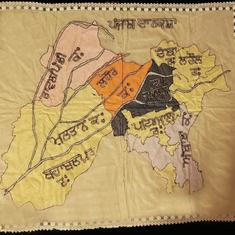The Big Story: UP and down
On Wednesday, Union Home Ministe Rajnath Singh assured members of an all party-delegation that visited Jammu and Kashmir that it had not placed restrictions on separatist leaders. However, only a day earlier, government officias had briefed journalists on scaling down security cover to separatist leaders, stopping their travel outside the country and even stopping perks such as accommodation in state guest houses.
At the same time, Bharatiya Janata Party General Secretary Ram Madhav rebuffed demands for a “political solution” to the unrest in Kashmir.
All in all, this was an ideal illustration of the BJP’s approach to Kashmir so far. On the one hand, project a stern face to the domestic media. On the other, do mostly nothing, even as the state administration crumbles.
The benefits of the former are apparent for the BJP. The media ran with the story of the government cracking down on separatists (even though Singh denied it just a day later). This would help shore up the BJP’s image as being tough on Kashmiri separatists. Since Kashmir does not exist in a vacuum, it would, just like anti-cow slaughter laws, help the BJP build up a strong election narrative in Uttar Pradesh, which will go to the polls in 2017.
Of course, this does nothing to actually help solve the Kashmir problem. Madhav’s statement that no “political solution” will actually embolden extremist Kashmiris. Already, the India state has practically lost control of South Kashmir, with the police fleeing from the four districts of Pulwama, Shopian, Kulgam and Anantnag and azadi rallies being held at will.
For a border state, this is alarming. Now is not the time for petty politicking. Kashmir needs statesmanship. The BJP’s domestic aims can wait.
The Big Scroll
- “They had rods and hammers”: Army raid on Kashmir village last month didn’t even spare its own staff.
- The middle ground the PDP helped expand in Kashmir hasn’t just shrunk – it has disappeared.
Political Picks
- Rebutting media reports, Union Home Minister Rajnath Singh has clarified that there would be no curbs on Hurriyat leaders.
- Andhra Pradesh has managed to wrangle a package deal from the Union government.
- For 2019, Amit Shah eyes new territories, zeroing in on 113 seats where the party can hope to win for the first time.
Punditry
- In the Hindu, S Akbar Zaidi tracks the rise and fall of Altaf Hussain, founder of the Muttahida Qaumi Movement in Karachi, Pakistan.
- Why is Reliance taking a $15 billion investment risk with Jio, asks Sundeep Khanna in Mint.
- In the Indian Express, C Raja Mohan narrates the history of India’s foreign policy with the rest of Asia.
Giggle
#CauveryWaterWars #Cauvery #Cauvery TN #CauveryVerdict #CauveryProtests My #cartoon pic.twitter.com/bpl02qlgK3
— MANJUL (@MANJULtoons) September 8, 2016
Don’t Miss
If you’ve ever wondered why Scroll.in doesn’t have a comments section, the website’s Readers’ Editor C Rammohan Reddy explains:
Actually, it looks like Scroll is not an exception in this regard. In the US, a number of major news and magazine sites have begun to do away with the Comments feature. Popular Science did in 2013, Reuters did in 2013 so did The Week the same year, and most recently, NPR.org shut it down last month. (For a discussion of this trend and a review readers can look at this recent article.)
The reasons for this trend appear to be common to all such sites. Too high a cost to bear for offering this opportunity to a small number of readers. Too much abuse, hate and vacuous comment. And too much of an effort required to moderate quality. NPR.org said that in July it received 491,000 comments but these were from only 19,400 readers– just 0.06% of their 33 million unique visitors that month.










